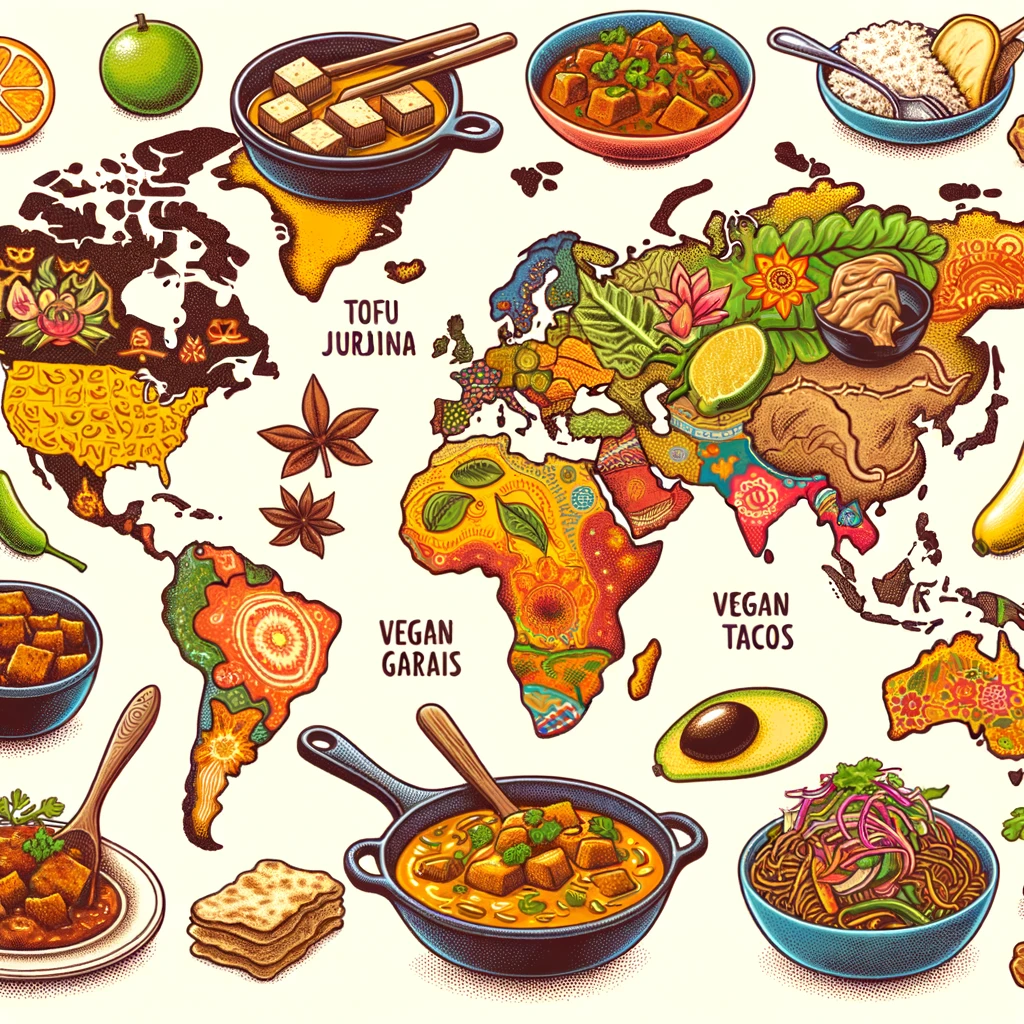The world has seen an incredible shift towards plant-based eating in recent years. Veganism, which was once perceived as a fringe movement, has now become mainstream, with millions adopting the lifestyle for various reasons, including health, environmental, and ethical concerns. But veganism isn’t just about abstaining from animal products; it’s about celebrating the rich variety of plant-based foods from across the globe. Let’s embark on a journey to explore the rise of veganism and the delectable global dishes that have contributed to its popularity.

Historical Roots of Vegan Cuisine
The concept of avoiding animal products isn’t new. Ancient civilizations, including those in India, Greece, and the Middle East, practiced forms of vegetarianism. In India, the philosophy of ‘Ahimsa,’ or non-violence, propagated by religions like Jainism and Buddhism, emphasized a vegetarian diet. But as we focus on veganism, which excludes all animal-derived ingredients, it’s essential to understand that many traditional dishes from around the world are inherently vegan.
Vegan Dishes Making Global Waves
- Tofu and Tempeh from Asia: Soy products, particularly tofu and tempeh, have been staples in Asian cuisine for centuries. While tofu is a soft, cheese-like product made from soy milk, tempeh is a firm cake produced from fermented soybeans. Both are versatile and can be used in various dishes, from stir-fries to salads.
- Jackfruit Curry from India: Jackfruit, often dubbed ‘vegetable meat,’ has a texture similar to pulled pork when cooked. This fruit is the star of many Indian vegan curries, where it’s simmered in aromatic spices and served with rice or flatbread.
- Vegan Tacos from Mexico: Traditional Mexican cuisine offers a plethora of vegan options. From bean-filled tacos to vegetable enchiladas, these dishes are packed with flavor and nutrients.
Veganism’s Global Journey
As people traveled and migrated, they took their culinary traditions with them, influencing and being influenced by the local cuisine. For instance, when Indian laborers moved to the Caribbean in the 19th century, they introduced ingredients like chickpeas and spices, which were incorporated into local vegan dishes.
Furthermore, with the rise of the internet and globalization, recipes and vegan cooking techniques are now accessible to anyone with an internet connection. This sharing of knowledge has played a pivotal role in popularizing vegan dishes worldwide.
The Environmental and Ethical Drive
The environmental impact of meat and dairy production has been a significant factor in pushing people towards veganism. Plant-based diets have a lower carbon footprint, use less water, and require less land than meat-based diets. Additionally, concerns about animal welfare in factory farms have also driven many to choose veganism.
The Future of Veganism
With advancements in food technology, we’re seeing the emergence of vegan alternatives that mimic the taste and texture of meat, dairy, and other animal products. These innovations, coupled with a growing awareness of the benefits of a vegan lifestyle, suggest that the future is green.
In essence, veganism is more than just a diet; it’s a celebration of global flavors and the embodiment of a compassionate, sustainable lifestyle



